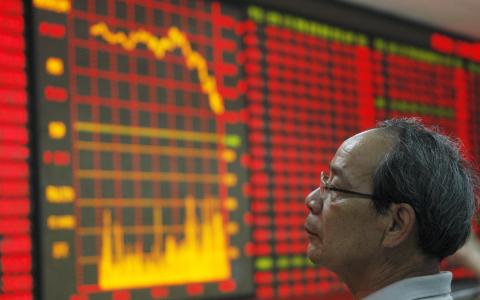
Once again, it’s “What China Trade War?” week. It’s getting harder to convince Wall Street that tariffs are absolutely going up, and with it so will inflation and interest rates. Then, there goes the stock market. But while it has proven a tough slog to slow the bull, trade tensions with China have definitely taken the spring out of this bull’s step.
“Trade tensions are here to stay,” says Richard Turnill, global chief investment strategist for BlackRock. “ Even without a full-blown trade war, escalating frictions could weigh on business confidence and growth ,” he says, both of which are at post-recession highs. “Economic fundamentals are still running strong,” he says, adding that investors would be wise to be more defensive as uncertainties rise.
Economic tensions between China and the U.S.—nearly all of it is centered on Washington’s goal to curtail a budding tech giant in Asia. For what it’s worth, that part of the world happens to be where all the growth is. Chinese tech leaders are dethroning the likes of Cisco Systems and Google. The Trump administration seems hell-bent on stopping it, citing intellectual property concerns. Trump has support from many Republicans and Democrats on this China fight.
Unlike other powerful emerging markets, no country has moved up the tech ladder as fast as China. Most China watchers cite the government’s forced tech transfers in joint ventures with Western firms, a tightly controlled economy and, of course, white-collar espionage.
Trade risks are not limited to China. The prospects of a North American Free Trade Agreement deal this year have most certainly deteriorated. The European Union has retaliated against U.S. steel and aluminum tariffs, while the U.S. has threatened to impose tariffs on German cars.
“Traders have been buying the dips,” says Naeem Aslam, chief market strategist for ThinkMarkets in London and a Forbes contributor. “I think investors have become more nervous,” he says. “The market action on Wall Street and in Asia yesterday is more evidence of this. The dominant trend may remain skewed to the downside, he says of the market’s direction.
Thanks to Trump’s targeting of some German exporters, the DAX index hit a two-month low yesterday. It rose a tad on Tuesday, up 0.17% by the opening bell in New York.
The FTSE index is also up today. But if trade tariffs on European automakers become a reality, both DAX and FTSE will retreat fast. “The European markets would face a serious sell-off, and the auto sector would be the focal point,” says Aslam.
Trade Representative Peter Navarro tried throwing some water on the fire yesterday afternoon in his positive assessment of U.S.-China relations. It’s more of the same: Trump and Xi Jinping are buddies. Regardless, it is clear the Trump administration is turning up the heat on economic sectors Xi deems strategic.
Trump expanded the tariff penalty by another $200 billion last week, bringing the total to around $450 billion worth of imported goods. The Administration may introduce more investment restrictions on China and more import controls by the end of this week, effectively instituting one set of trade rules for China and another for the rest of the world.
This makes a trade war more likely now than it was a month ago.
China is unlikely to compromise on its strategic goals to develop a high-tech manufacturing sector. June 30 is a key date for more China trade tensions to unfold. More restrictions will be announced that could affect the Chinese supply chain and harm the ability of its “national champion” companies to import critical technology—mostly from the U.S. This would fly in the face of Trump's recent removal of restrictions on ZTE, one of those national champs in the telecom space. Xi would not be pleased if ZTE went from being banned from importing U.S. components to not being banned, to being banned again. This would not go over well. The Xi-Trump friendship the president loves to tout would be in big trouble.
BlackRock highlights three key questions on China:
- Will there be deal discussions between senior officials of the two countries?
- How much pressure to retreat will the White House get from Republican legislators and U.S. firms?
- And to what extent will U.S. companies in China be pressured by local authorities?
“The answers to these questions may provide some guidance as to whether the next move is toward a deal or more bouts of tit-for-tat,” says Turnill. “Some form of investment restriction is likely to come first. We see solid fundamentals still underpinning global growth in the short term, but acknowledge that trade tensions are amplifying the uncertainty,” he says. “Portfolio resilience is crucial.”



